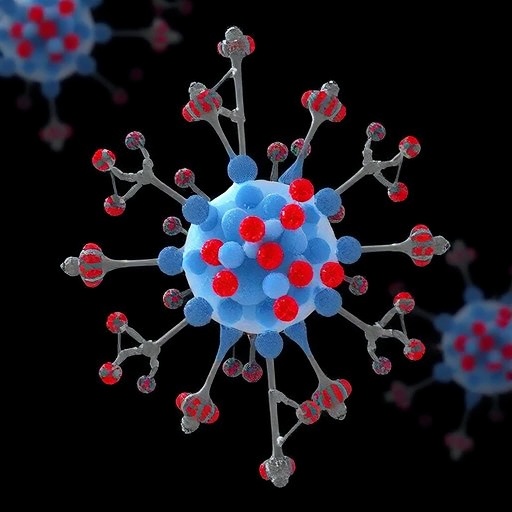In recent years, lipid nanoparticles (LNPs) have emerged as a cornerstone in the delivery of RNA-based therapeutics, including the groundbreaking mRNA vaccines that reshaped the landscape of infectious disease prevention. Despite their pivotal role, a detailed understanding of the physicochemical properties of LNPs—and how these properties dictate biological function—remains elusive. Traditional characterization techniques, such as dynamic light scattering (DLS), provide only rudimentary insights, primarily focusing on general particle size and polydispersity. However, as researchers strive to enhance the specificity, potency, and safety profiles of LNPs for clinical applications, it becomes clear that more sophisticated and high-resolution analytical methods are necessary to unlock the complexities inherent in these nanoscale delivery vehicles.
A groundbreaking study published recently in Nature Biotechnology reveals an innovative approach to unraveling the intricacies of LNP formulations by employing solution-based biophysical techniques that transcend conventional assessments. This work delves into the structural heterogeneity of LNPs—illuminating variations not only in size but also in RNA load and morphological features—thus offering a multidimensional portrait of these nanoparticles. The investigation highlights how factors such as lipid composition and manufacturing processes crucially influence these physicochemical characteristics, which in turn modulate the efficacy and bioactivity of LNP-mediated RNA delivery.
Central to this advancement is the application of sedimentation velocity analytical ultracentrifugation (SV-AUC), a technique capable of dissecting particle populations based on their sedimentation behavior under high centrifugal forces. SV-AUC reveals distinct distributions of LNP sizes within preparations, detecting subpopulations that traditional light scattering methods often mask. By providing resolution on a continuum of sedimentation coefficients, this method uncovers the intrinsic polydispersity that defines LNP populations, thereby offering a more nuanced view into the heterogeneity that exists even within ostensibly uniform batches.
Complementing SV-AUC, the researchers utilize field-flow fractionation (FFF) combined with multiangle light scattering (MALS), enabling fractionation of nanoparticles based on hydrodynamic properties prior to size determination through light scattering. This coupled approach captures the complexity of LNPs in a more native state and quantitatively evaluates size distributions while accounting for subtle variations engendered by differences in formulation parameters. When coordinated with size-exclusion chromatography (SEC) linked to synchrotron small-angle X-ray scattering (SAXS), the structural remodeling of LNPs can be assessed in unprecedented detail, detecting not only size but also shape and internal organization at the nanoscale.
These complementary techniques converge to provide a holistic picture of LNP physicochemical properties, revealing that LNPs are not monolithic entities but rather a spectrum of particles with variable RNA encapsulation and morphology. The study underscores that this polydispersity arises from both the lipid components—such as the ratios of ionizable lipids, phospholipids, cholesterol, and polyethylene glycol-lipids—and the specifics of lipid-mRNA assembly methods. Variations in the mixing approach (for example, microfluidic versus bulk mixing) impart distinct structural fingerprints, influencing not only the biophysical profile but also the biological performance of the nanoparticle formulations.
One of the most impactful aspects of the research lies in correlating these detailed physicochemical properties with biological outcomes such as mRNA translation efficiency in vitro and in vivo. This link is crucial, as successful mRNA delivery depends heavily on how well the RNA payload is protected, released, and translated within target cells. The findings suggest that certain structural characteristics—perhaps subtle differences in size distribution, RNA loading uniformity, or particle morphology—can predict transfection efficiency. Such insights pave the way for rationally designing LNPs tailored for optimized delivery to specific cell types or tissues, minimizing off-target effects and enhancing therapeutic indices.
By illuminating how the detailed structure of LNPs informs their function, this study sets the stage for a paradigm shift in the development of lipid nanoparticle technologies. Rather than relying on traditional metrics with limited resolution, researchers and pharmaceutical developers gain access to advanced biophysical tools that capture the heterogeneous and dynamic nature of these delivery vehicles. This advancement accelerates the iterative design process and supports the generation of new design rules, a crucial step toward next-generation RNA therapeutics with improved precision and safety.
Furthermore, the implications of these findings extend beyond mRNA vaccines, encompassing a broad universe of RNA-based treatments, including gene editing tools, siRNA therapies, and protein replacement approaches. As the pharmaceutical landscape increasingly embraces nucleic acid medicines, the ability to finely tune nanoparticle properties at the nanoscale becomes indispensable. The marriage of analytical ultracentrifugation, field-flow fractionation, and synchrotron SAXS represents a powerful toolkit that can be adapted to meet the demands of diverse therapeutic platforms.
Intriguingly, this research also raises questions about how storage conditions and scaled-up manufacturing processes might affect LNP heterogeneity. The sensitive balance between lipid composition, mixing dynamics, and resulting nanoparticle properties necessitates robust, high-throughput characterization methods to ensure batch-to-batch consistency. Implementing these advanced solution-based biophysical techniques in quality control frameworks promises to enhance the reliability and reproducibility of LNP formulations deployed in clinical settings.
The study’s comprehensive dataset reveals that RNA loading within LNP populations is not uniform, a factor that could significantly influence therapeutic efficacy and safety. Particles with suboptimal RNA content may act as delivery “decoys,” potentially eliciting unintended immune responses or reducing overall mRNA expression. Therefore, fine control and monitoring of encapsulation efficiency emerge as critical parameters. As a result, this work pushes the boundaries of our understanding regarding the heterogeneity inherent in LNP formulations and spotlights the importance of rigorous analytical characterization for success in clinical translation.
Importantly, these methods also enable the deconvolution of size, shape, and internal structural parameters, allowing researchers to understand how morphological variations affect cellular uptake, endosomal escape, and intracellular trafficking—key hurdles in improving delivery efficiency. This integrated approach presents a leap forward by reconciling particle physical properties with biological function, ultimately guiding the design of bespoke LNPs custom-engineered for specific therapeutic endpoints.
As the field moves forward, the integration of these biophysical characterization technologies with high-throughput screening and machine learning models holds promise to revolutionize LNP design. Such interdisciplinary approaches could predict the performance of novel formulations before empirical testing, streamlining the path from bench to bedside. With improved insight into the biophysical underpinnings of LNP behavior, the era of precision nanoparticle therapeutics is rapidly becoming a reality.
In summary, the adoption of solution-based biophysical methods, including SV-AUC, FFF-MALS, and SEC-SAXS, represents a transformative advance in understanding the subtle yet impactful variations in LNP size, RNA loading, and morphology. This multi-technique strategy reveals the intrinsic polydispersity in LNPs shaped by lipid composition and formulation techniques, correlating these physical nuances with transfection performance. The work heralds a new chapter in nanoparticle design, where detailed characterization empowers rational engineering of potent, targeted, and safer RNA delivery systems. This approach is poised to become an indispensable standard in the development pipeline of next-generation nucleic acid therapies that promise broad impact across medicine.
Subject of Research: Structural and physicochemical characterization of lipid nanoparticle formulations for RNA delivery using solution-based biophysical techniques.
Article Title: Elucidating lipid nanoparticle properties and structure through biophysical analyses.
Article References:
Padilla, M.S., Shepherd, S.J., Hanna, A.R. et al. Elucidating lipid nanoparticle properties and structure through biophysical analyses. Nat Biotechnol (2025). https://doi.org/10.1038/s41587-025-02855-x
Image Credits: AI Generated
Tags: advanced analytical methods for LNPsbiophysical techniques for nanoparticlesinfluence of lipid composition on LNP efficacyinnovations in lipid nanoparticle researchlipid nanoparticles characterizationmanufacturing processes of lipid nanoparticlesmRNA vaccine delivery systemsnanoparticles in infectious disease preventionphysicochemical properties of LNPsRNA delivery mechanismsRNA-based therapeutic deliverystructural heterogeneity of lipid nanoparticles





